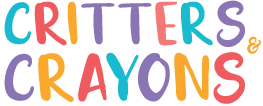We are charmed by the way toddlers wobble their way through words in their early stages of speech. Eager attempts to mimic the sounds often result in words that remain with us for years. In literature, A A Milne gave us the ‘Heffalump’ (elephant) in Winnie the Pooh.
When the wobble with words migrates to a persistent problem in learning to read, it takes on a more serious tone. For many kids, finding their way through English phonics and spelling is a nightmare. And no wonder. English presents readers with challenges that are not so difficult in many other languages.
Imagine yourself trying to come to grips with Chinese characters or the Greek alphabet today. You will soon discover what it is like to be a beginning reader. Then consider the English alphabet with letters by a, b, d, p and q, and you can understand a child’s confusion.
Dyslexia is the most commonly recognised form of reading disorder. It is now better understood as a result of research over many years. One organisation in Adelaide focused on such learning problems is SPELD.
It is a mistake to associate this disorder with lack of intelligence. kids with normal or above-average intelligence can be affected by it. I was recently approached by adults in Norway who said that they had dyslexia as kids and they were concerned for their kids’s confidence because they had inherited it. The effects of dyslexia can be longstanding. Too often these kids grow up thinking themselves ‘dumb’, when in fact they are not. The Norwegian parents addressed me very capably in English.
Winnie the Pooh might have been a bear of little brain, but he had an amazing effect on generations of kids who later discovered that character is what really matters. The difficulties with reading can be overcome with the right methods to break the dyslexic spell.
The current Australian Children’s Laureate claims she was dyslexic … and there’s nothing ‘bad, abnormal or impaired’ about that famous author and speaker!
